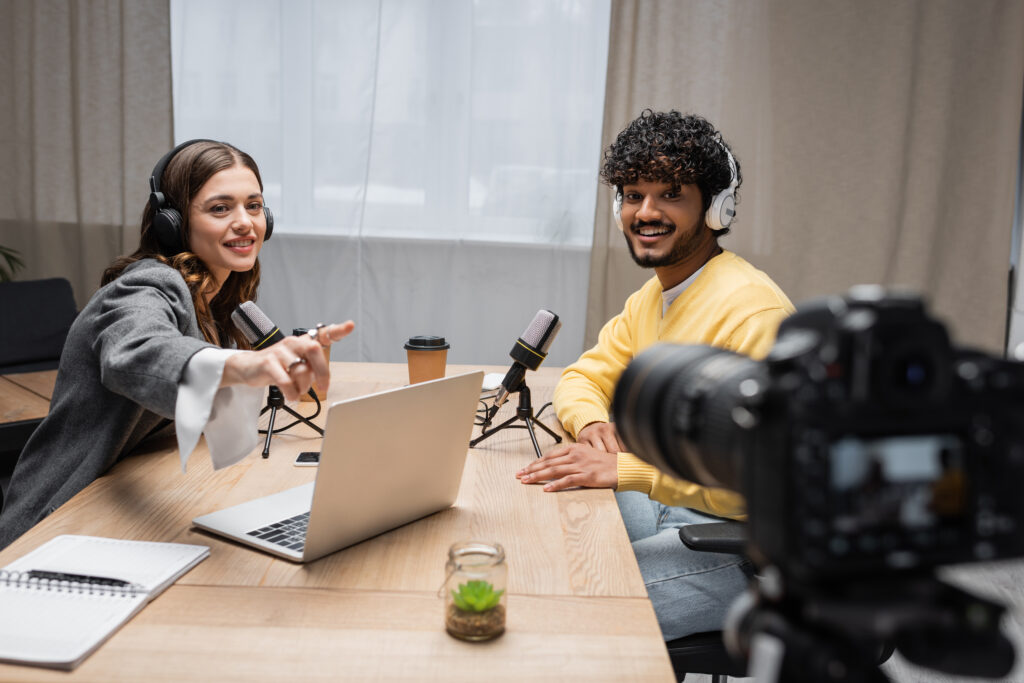The Role of Editing in Social Media Content Creation
While capturing high-quality content is critical, editing is where much of the magic happens. The better your raw footage or audio, the more options you have when editing to enhance, reformat, and repurpose your content. Let’s explore how editing fits into the social media content creation process, along with best practices for optimizing your workflow.
Starting with High-Quality Content for Flexibility in Editing
The quality of the original material—both in terms of resolution and sound—is key to a successful editing process. High-resolution footage (e.g., 1080p, 4K) offers flexibility in editing:
- Resizing or Cropping: Higher-quality footage allows you to zoom in or crop without significant quality loss, which is especially important when repurposing content for different platforms (e.g., resizing a landscape video for a portrait format like Instagram Stories).
- Reducing File Size: Through compression during editing, you can reduce the file size without losing noticeable quality, making it easier to transfer, upload, and store.
- Sound Adjustments: Clearer audio is easier to enhance. External microphones help ensure that background noise can be reduced and dialogue or narration stays sharp in post-production.
Editing from Original or SD Card Copies
One of the most critical aspects of editing is working from the original footage. Editing from the raw file gives you the best quality to start with, avoiding potential compression that can occur when files are transferred or uploaded for remote access.
- Editing Before Transfer: Ideally, edit the original material stored on the SD card or a local copy. Uploading large video files for remote editors can take significant time and may result in compression, which reduces the video’s quality and editing flexibility.
- Compression Issues: When files are uploaded to cloud services or shared online, they are often automatically compressed, especially on free services like Google Drive or Dropbox, leading to potential quality loss.
For remote editing, sending a copy of the original SD card files via physical storage devices or a lossless transfer service (e.g., WeTransfer or Dropbox Premium) is often preferable to relying on compressed online uploads.
Editing Software: On-Device, PC, and Online Options
There are different ways to edit social media content depending on your resources, including on-device, computer-based, or even using platform-specific tools.
- On-Device Editing
Many smartphones now come with built-in editing tools. For quick adjustments on the go:
- Trimming: Easily cut unnecessary parts of the video to reduce length.
- Effects: Basic filters and effects can be applied directly on smartphones, perfect for fast editing for Instagram or TikTok content.
- Apps: You can use mobile apps like iMovie (iOS) or InShot (Android/iOS) to perform more advanced editing.
- PC Editing with Software
Using a computer gives you much more flexibility for editing, allowing you to work with powerful software like:
- Adobe Premiere Pro: Industry-standard for professionals, offering full control over video and sound, allowing for advanced effects, color grading, and sound adjustments.
- Final Cut Pro (Mac): Another professional-grade editing tool with a user-friendly interface.
- iMovie: Free on Mac, with simplified tools suitable for beginners or for producing high-quality videos quickly.
- Platform-Specific Editing
Some platforms provide basic editing tools:
- YouTube Studio: Includes basic tools like trimming, audio adjustments, and adding captions. However, more advanced editing must be done externally before uploading.
- Instagram and TikTok: Both platforms offer built-in editing tools, including filters, sound effects, and text overlays, but these are limited in scope compared to dedicated editing software.
Some elements like cards and thumbnails (especially for YouTube) can only be added on the platform itself after the video is uploaded.
Editing’s Impact on File Size and Quality
Editing can often reduce the overall file size through compression or trimming, but you need to strike a balance between reducing file size and maintaining quality:
- Compression: Most editing software allows you to compress files while retaining visual quality, especially when exporting to formats like MP4.
- Resolution Adjustments: You can lower the resolution to 720p or adjust the frame rate if you want smaller file sizes, which is important for faster uploads on slow internet connections.
- Length: Shortening a video reduces the file size, making it more manageable for platforms with length limitations (e.g., Instagram or TikTok).
Storage and Archiving: Keep or Delete Original Footage?
After editing, you’ll need to decide whether to keep or delete the original footage. There are pros and cons to both:
- Keeping the Original Footage:
- Flexibility for Future Edits: Keeping the raw files allows you to revisit the footage for future edits, repurposing, or for creating higher-quality versions later.
- Backup: Original footage acts as a backup in case you lose the edited version or want to re-edit with new software or technology.
- Storage Requirements: High-resolution footage, especially 4K or RAW files, can take up a lot of space. You may need additional external storage or cloud solutions for archiving.
- Deleting the Original Footage:
- Storage Savings: If storage space is limited, especially on smaller devices like laptops, deleting the original files after editing can free up space.
- Risk of Loss: Once deleted, you won’t have access to the raw footage for future use, limiting flexibility.
The decision to keep or delete depends on how often you may need the footage for repurposing or how much storage space is available.
Conclusion: Quality, Editing, and Content
While editing can greatly enhance your content, it starts with capturing high-quality footage and sound. Working from the original material provides the most flexibility for reformatting, repurposing, and reducing file size, while editing tools across devices offer various levels of complexity and control.
In the end, though, the content itself remains the most critical factor. Great editing won’t save poor content, so focus on delivering value and engaging your audience. When combined with the right formats, resolutions, and editing techniques, your content will stand out and reach its full potential.


